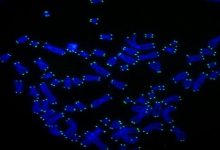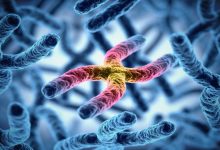
Scientists from Columbia University have developed a mechanism to develop human hair in a dish that could open hair restoration surgery to more individuals, including females, and enhance the way pharma companies are looking for new hair development drugs.
This is the first time that human hair follicles have been produced completely in a dish, without the need for skin implantation.
“Cells from rats and mice grow beautiful hairs,” Christiano says. “But for reasons we don’t totally understand, human cells are resistant.”
Christiano has been trying to create conditions that imitate the 3D environment in which human hair cells normally inhabit to break the resistance of human hair cells. The laboratory first attempted to create small cell spheres hanging drops of liquid inside. But the results were unpredictable when the spheres were implanted in mice: some people’s cells created new hair while others did not.
How patterned hair follicles were created using 3D printing
In the latest research, Christiano’s team took advantage of the distinctive ability of 3D printers to produce a more natural hair follicle development microenvironment.
The scientists used 3D printing to produce only half a millimeter broad plastic molds with lengthy, slender extensions.
“Previous fabrication techniques have been unable to create such thin projections, so this work was greatly facilitated by innovations in 3D printing technology,” says Erbil Abaci, Ph.D., first author of this study.
After human skin was engineered to develop around the mold, human volunteer’s hair follicle cells were positioned in the profound wells and surrounded by keratin-producing cells.
The cells were fed a blend of growth factors with components that the lab discovered stimulates hair development, including JAK inhibitors.
Human hair follicles emerged after three weeks and began to create hair.
While the technique still needs to be optimized, human hair follicles generated in this manner could yield an unlimited source of new hair follicles for patients undergoing robotic hair restoration surgery.
“What we’ve shown is that we can basically create a hair farm: a grid of hairs that are patterned correctly and engineered so they can be transplanted back into that same patient’s scalp,” Christiano says.
Approximately 2,000 hair follicles have to be transferred from the back of the head to the front and top. It is generally reserved for male patients who have stabilized their hair loss and have sufficient hair to contribute.
“That expands the availability of hair restoration to all patients–including the 30 million women in the United States who experience hair thinning and young men whose hairlines are still receding. Hair restoration surgery would no longer be limited by the number of donor hairs.”
The pharma sector can also use the developed follicles to screen for fresh hair regeneration medications.
Presently, the failure to develop human hair follicles in a laboratory dish has blocked high-performance screening for new hair medications.
No drugs were discovered through testing; the only two authorized for the therapy of hair loss pattern — finasteride and minoxidil — were initially tested for other diseases as medicines.
The team now hopes that grown hair farms will open the possibility to conduct high-performance drug screening to discover new hair development pathways.






